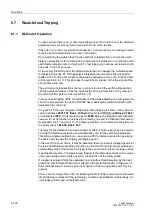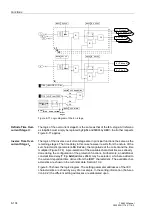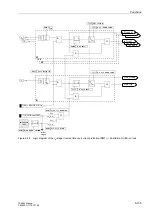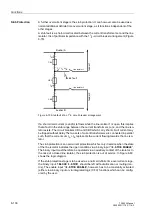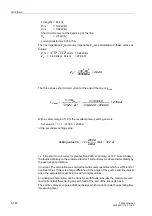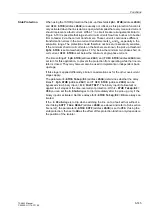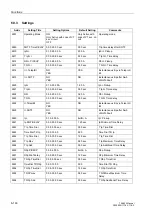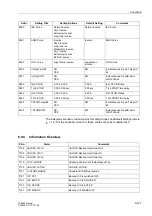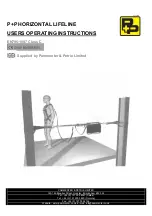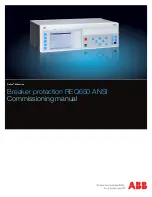
Functions
6-133
7SA522 Manual
C53000-G1176-C119-2
6.9.1
Method of Operation
Measured Values
The phase currents are fed to the device via the input transformers of the measuring
input. The earth current 3·
I
0
is either measured directly or calculated from the phase
currents, depending on the ordered device version and usage of the fourth current in-
put
I
4
of the device.
If
I
4
is connected in the current transformer star-point connection circuit the earth cur-
rent is directly available as a measured quantity.
If the device is supplied with the high sensitivity current input for
I
4
(ordered version),
this current
I
4
— under consideration of the factor
(address
, refer to
Sub-section 6.1.1) of the power system data 1 — is used. As the linear range of this
measuring input is severely restricted in the high range (above approx. 1,6 A), this cur-
rent is only evaluated up to an amplitude of approx. 1 A. In the event of larger currents,
the device automatically switches over to the evaluation of the zero sequence current
derived from the phase currents. Naturally, all three phase currents obtained from a
set of three star connected current transformers must be available and connected to
the device. The processing of the earth current is then also possible if very small as
well as large earth fault currents may occur.
If the fourth current input
I
4
is used e.g. for a power transformer star-point current or
for the earth current of a parallel line, the device derives the earth current from the
phase currents. Naturally in this case also all three phase currents derived from a set
of three star connected current transformers must be available and connected to the
device.
Definite Time High
Set Overcurrent
Stage I>>
Each phase current is numerically filtered and then compared with the set value
, the earth current with
. After expiry of the associated time delays
respectively
a trip command is issued. The reset threshold is approx.
5 % below the pick up threshold, but at least 1,5 % of rated current below the pick up
threshold.
Figure 6-77 shows the logic diagram of the I>>–stages. They may be blocked via the
binary input “
!%/2&.2&,!!
”. The binary input “
!2&,QVW75,3
” and the function
module “Switch on to fault” are common to all stages and further described below.
They may, however, separately affect the phase and/or earth current stages. This is
accomplished with the following setting parameters:
•
(address
), which determines whether a non-delayed trip of
this stage is possible (
<HV
) via the binary input “
!2&,QVW75,3
” or not (
1R
)
•
(address
), which determines whether non-delayed tripping of this
stage is possible (
<HV
) or not (
1R
) following switching of the feeder on to a dead
fault.
Summary of Contents for siprotec 7SA522
Page 20: ...7SA522 Manual C53000 G1176 C119 2 ...
Page 64: ...7SA522 Manual C53000 G1176 C119 2 ...
Page 89: ...SIPROTEC 4 Devices 4 25 7SA522 Manual C53000 G1176 C119 2 Figure 4 20 CFC Logic example ...
Page 408: ...7SA522 Manual C53000 G1176 C119 2 ...
Page 456: ...7SA522 Manual C53000 G1176 C119 2 ...
Page 516: ...7SA522 Manual C53000 G1176 C119 2 ...
Page 620: ...Appendix B 48 ...








